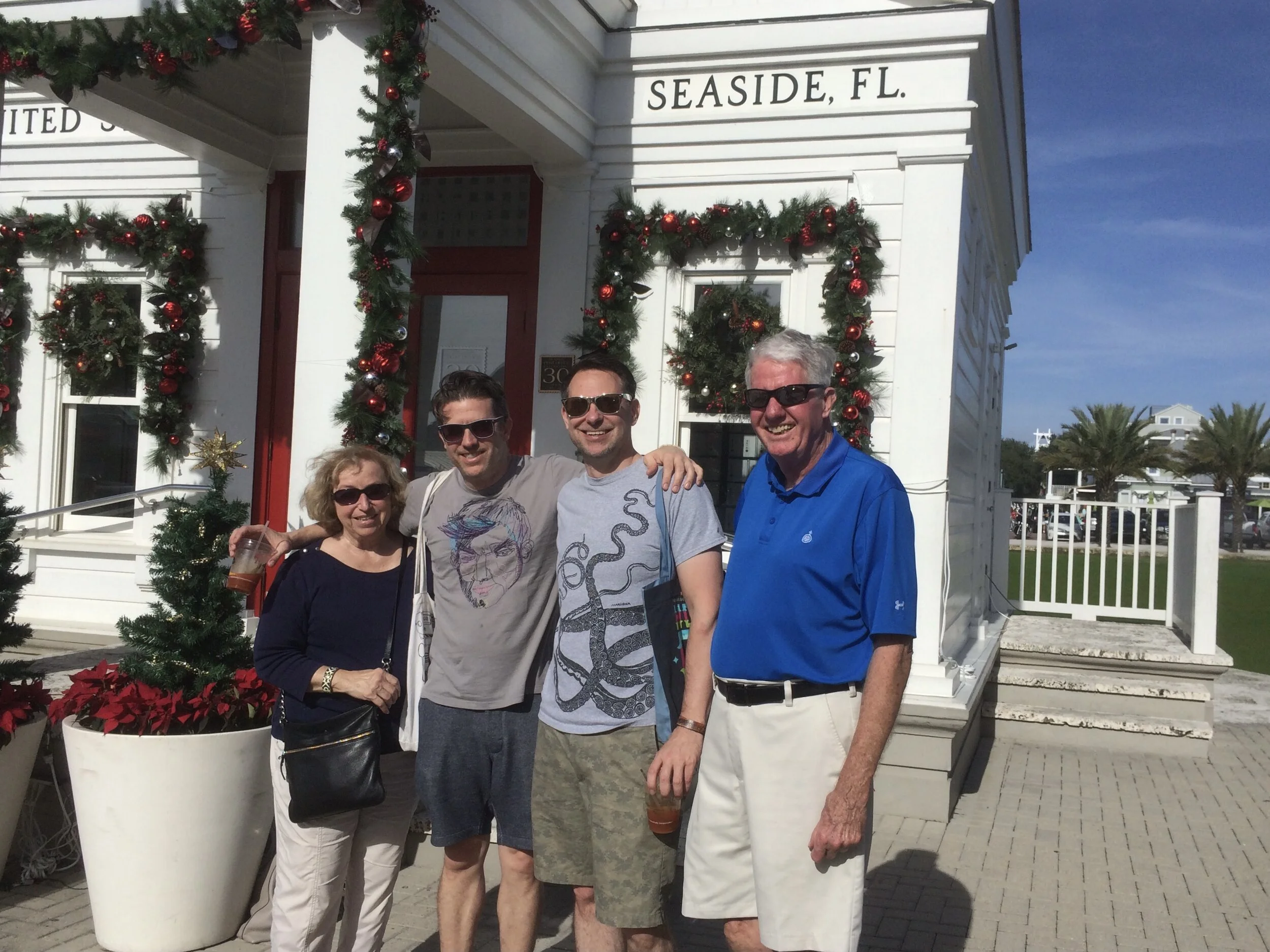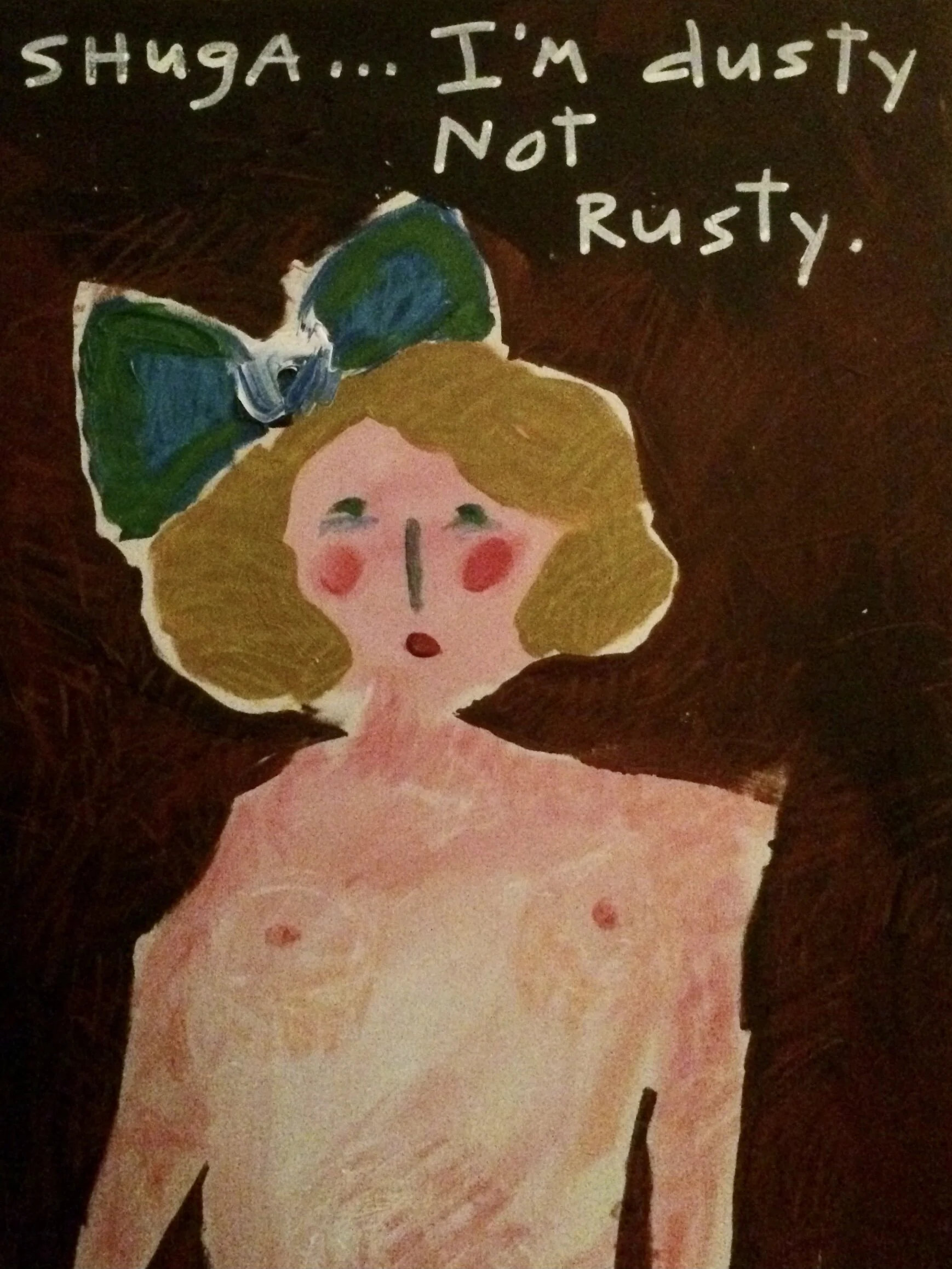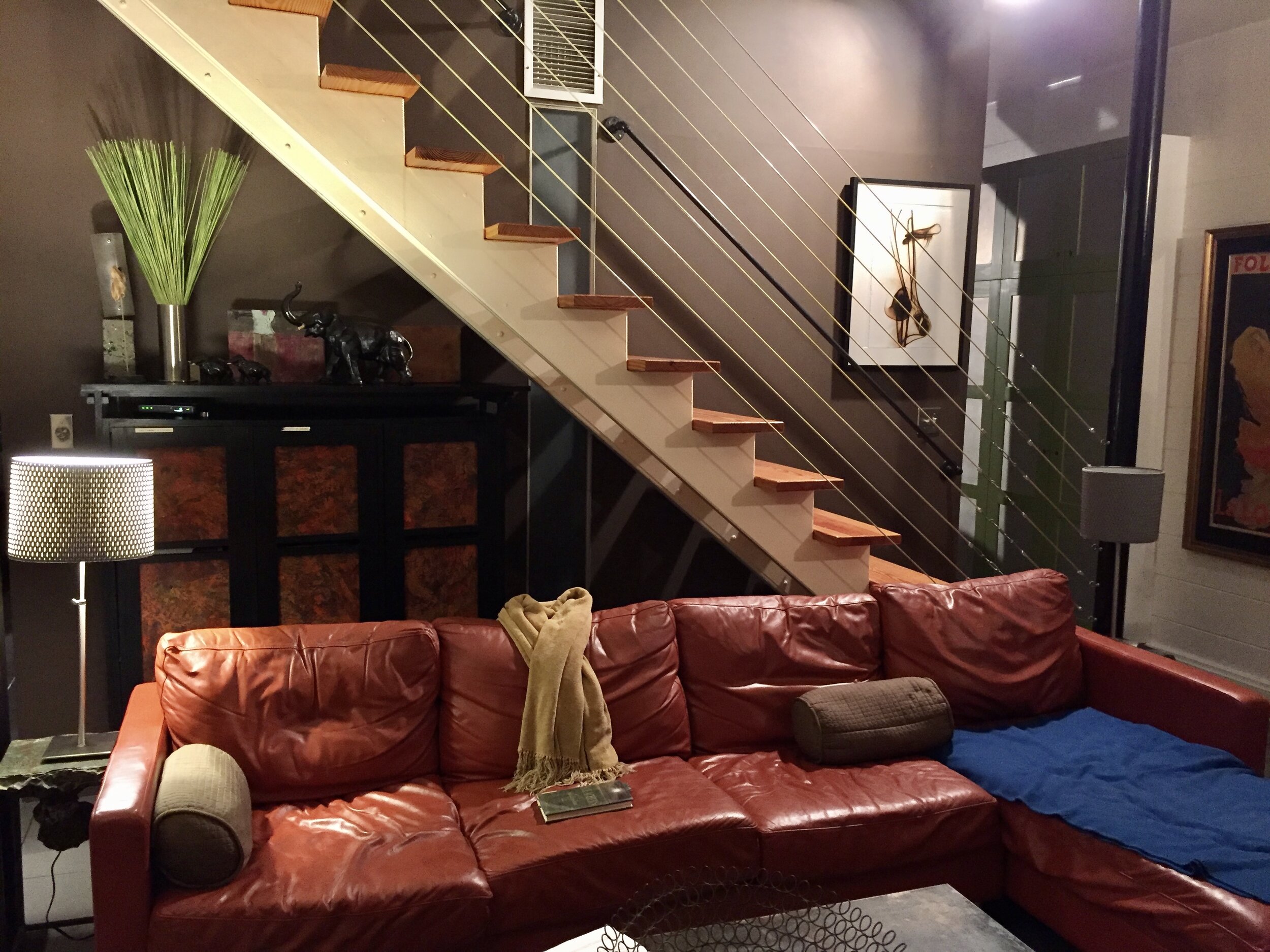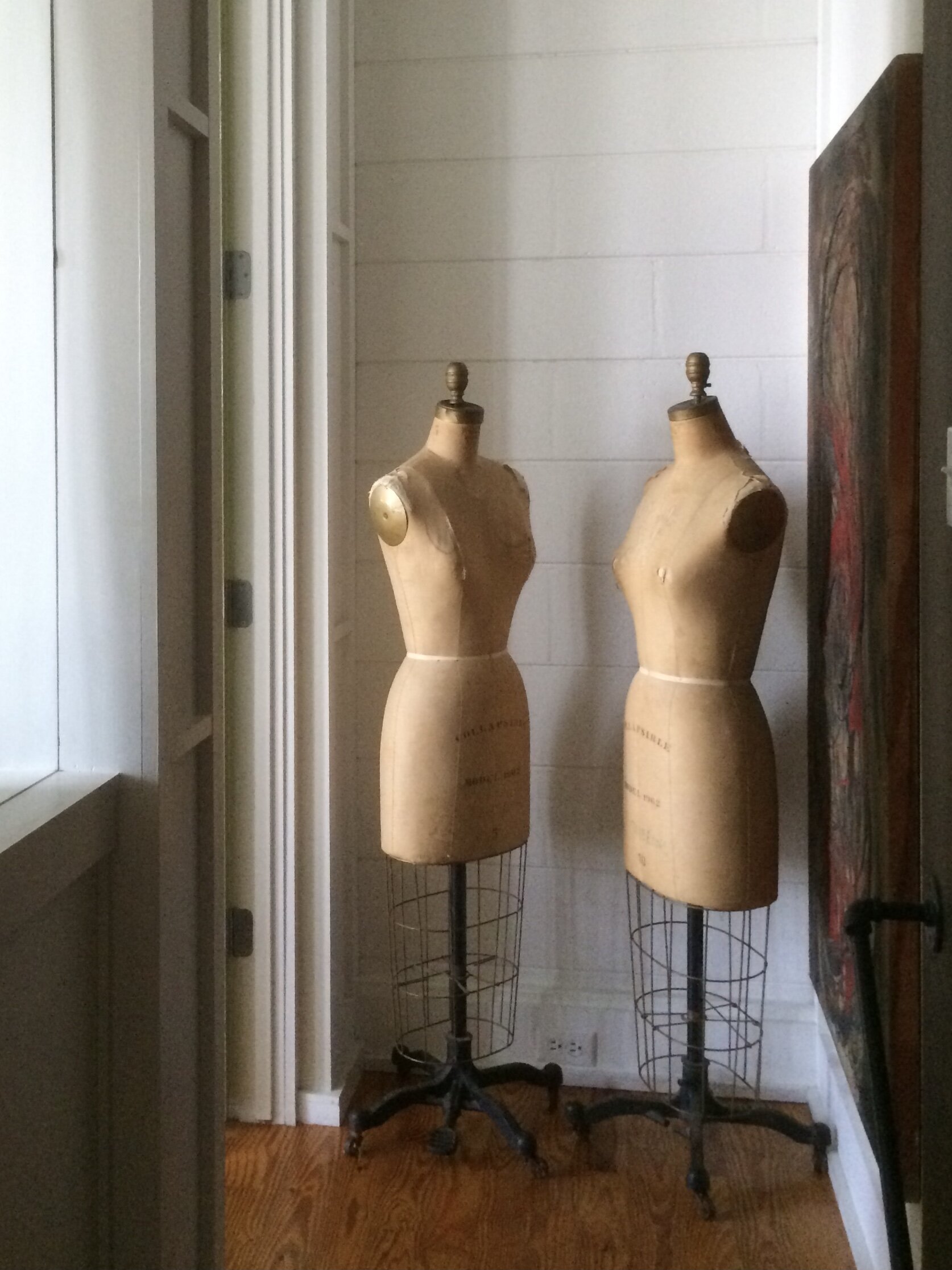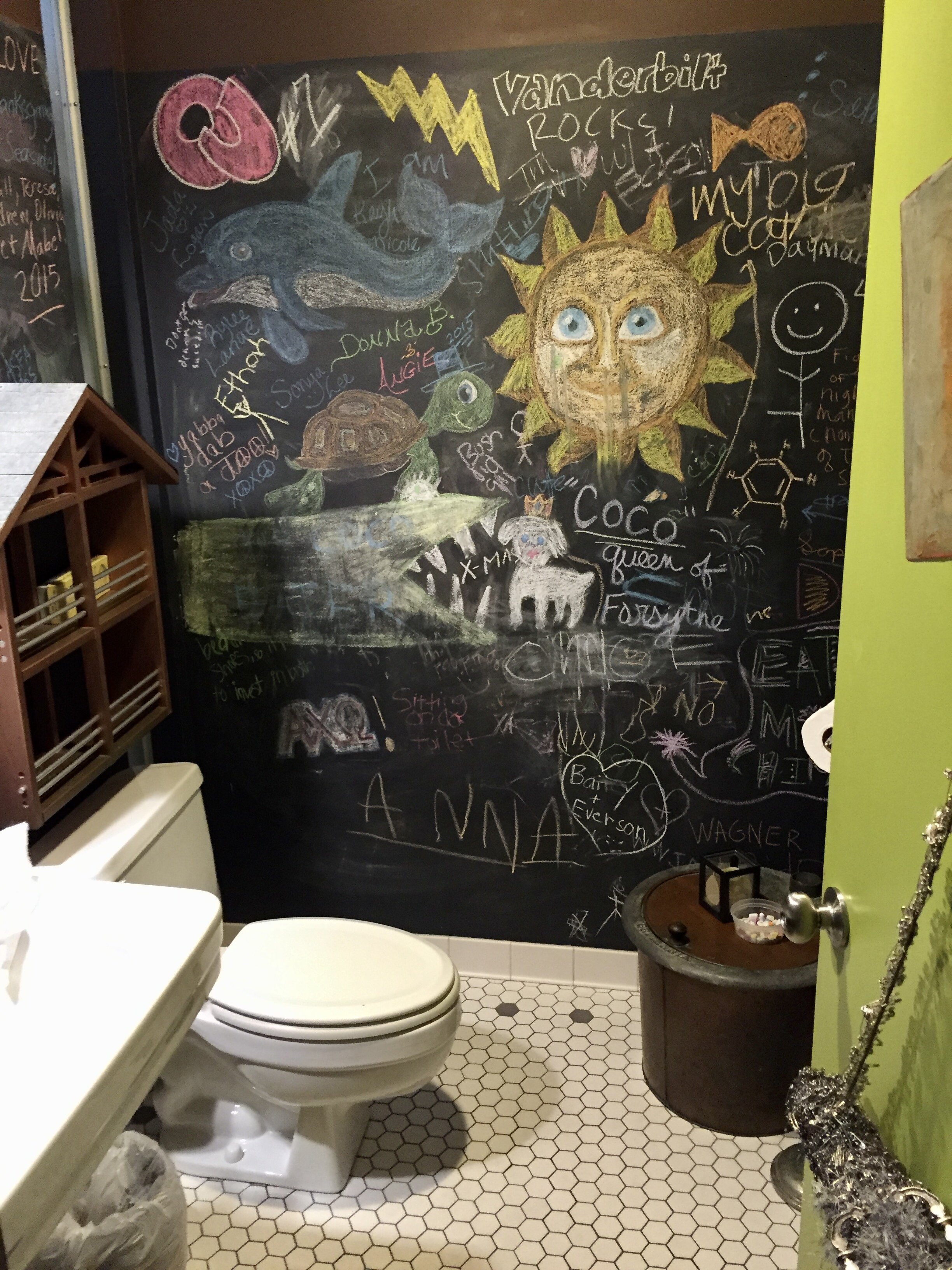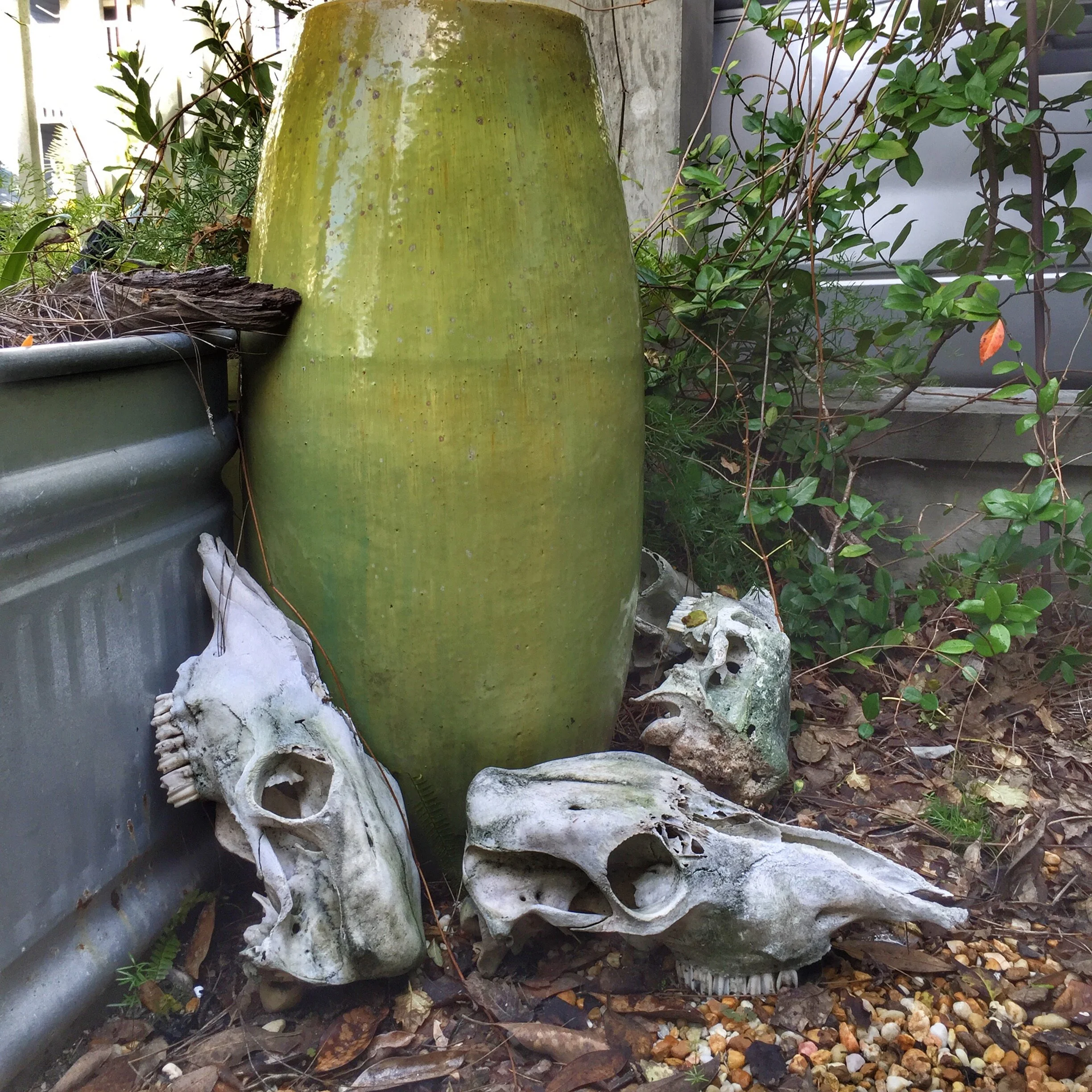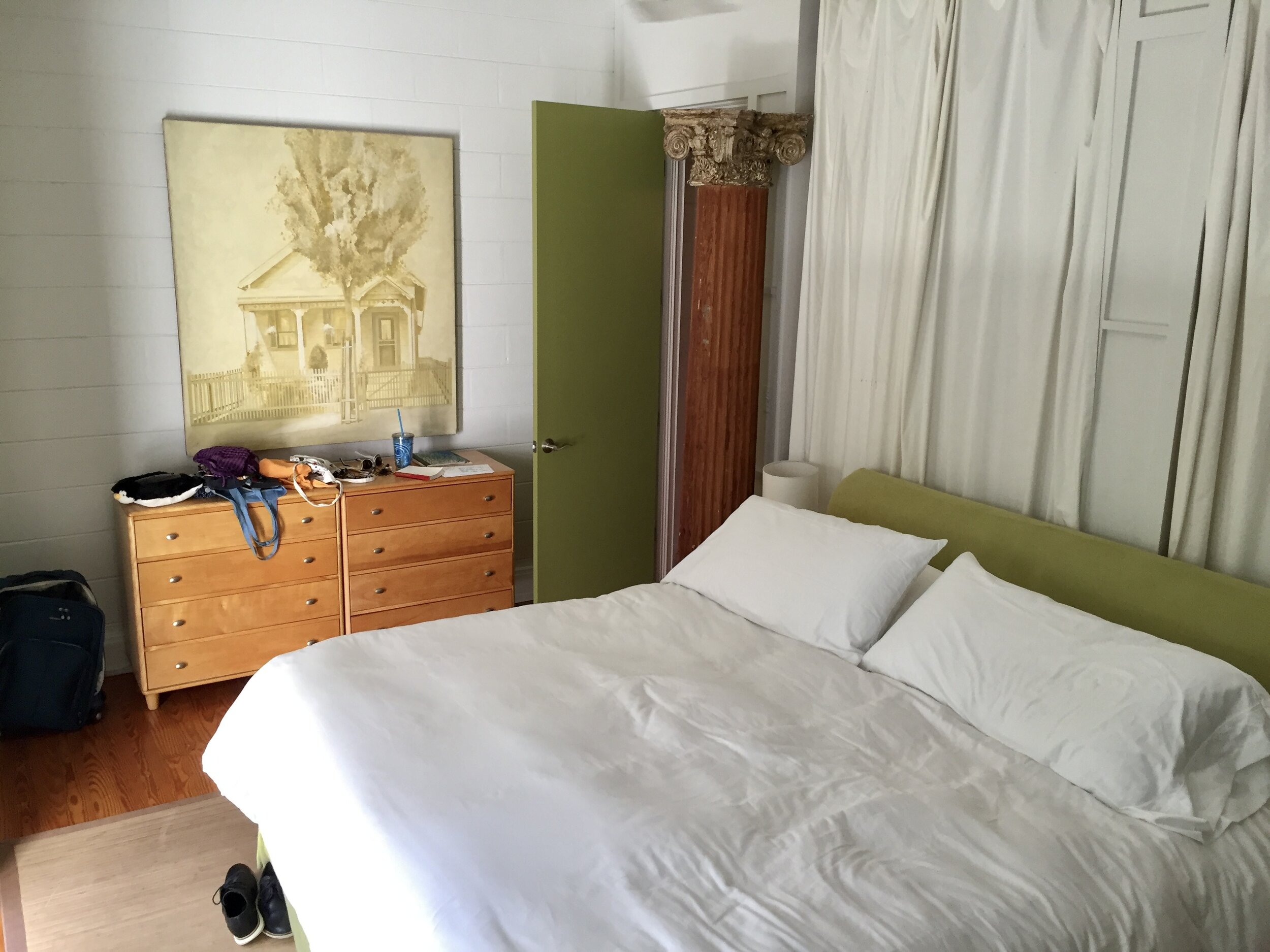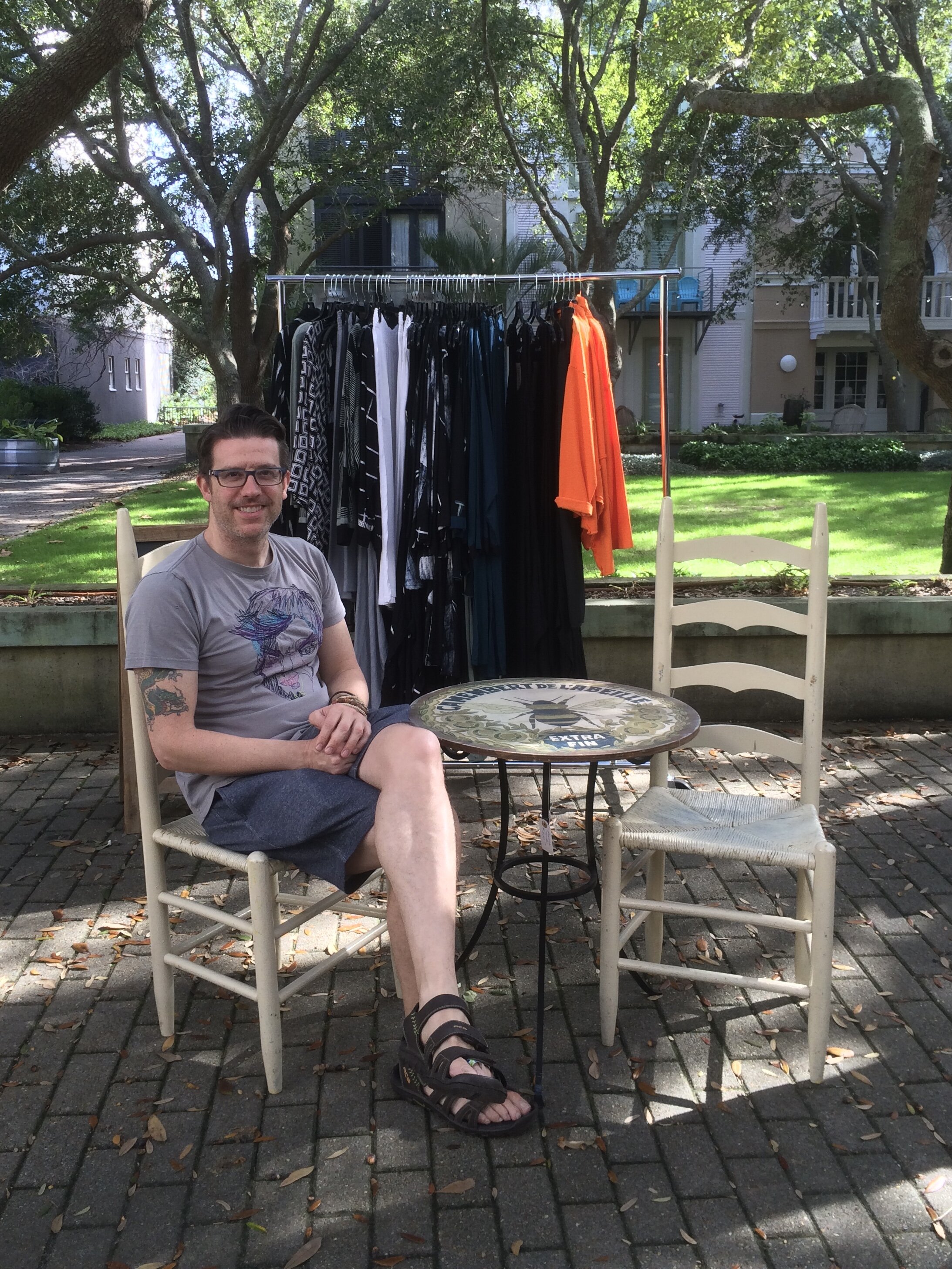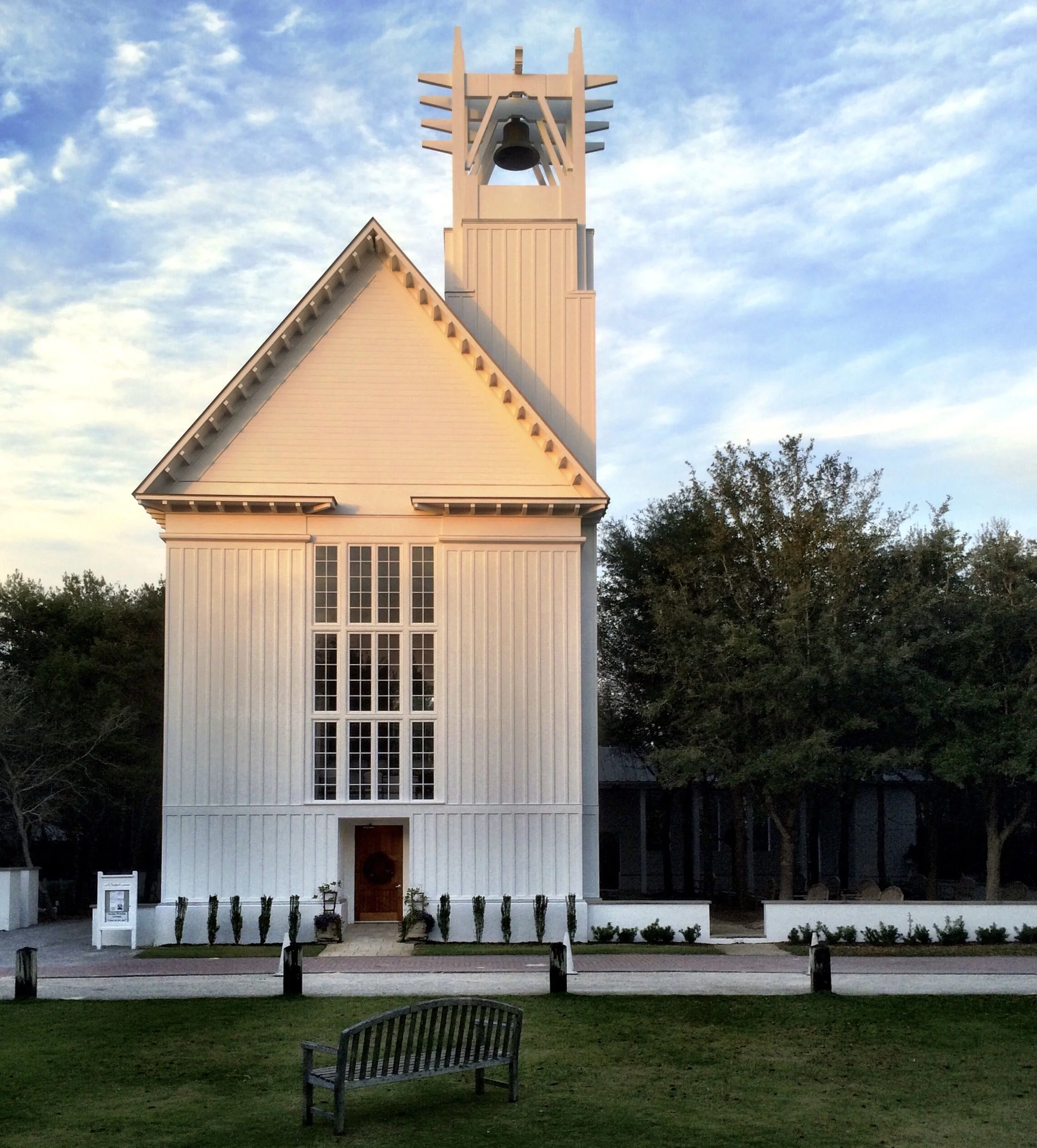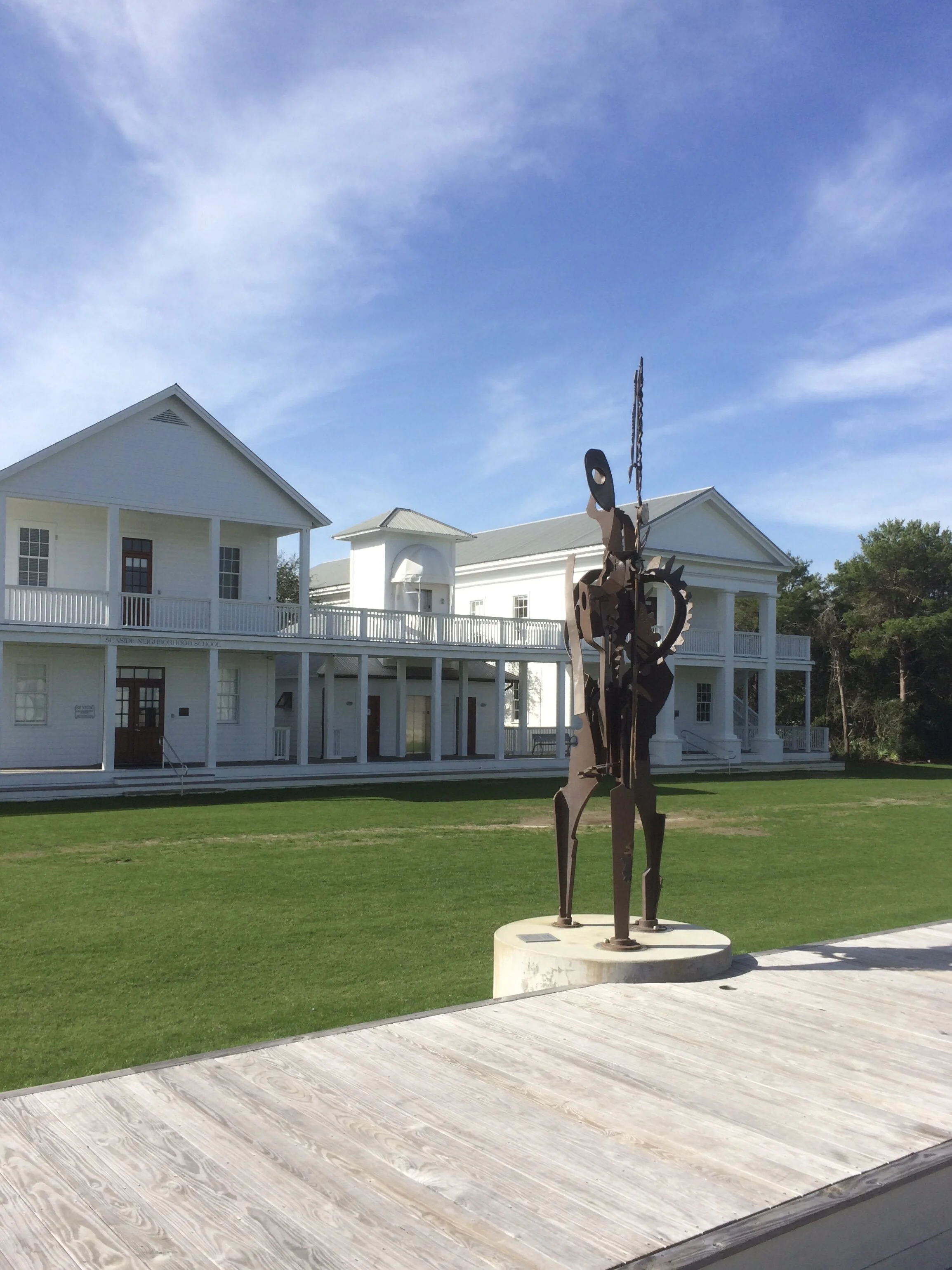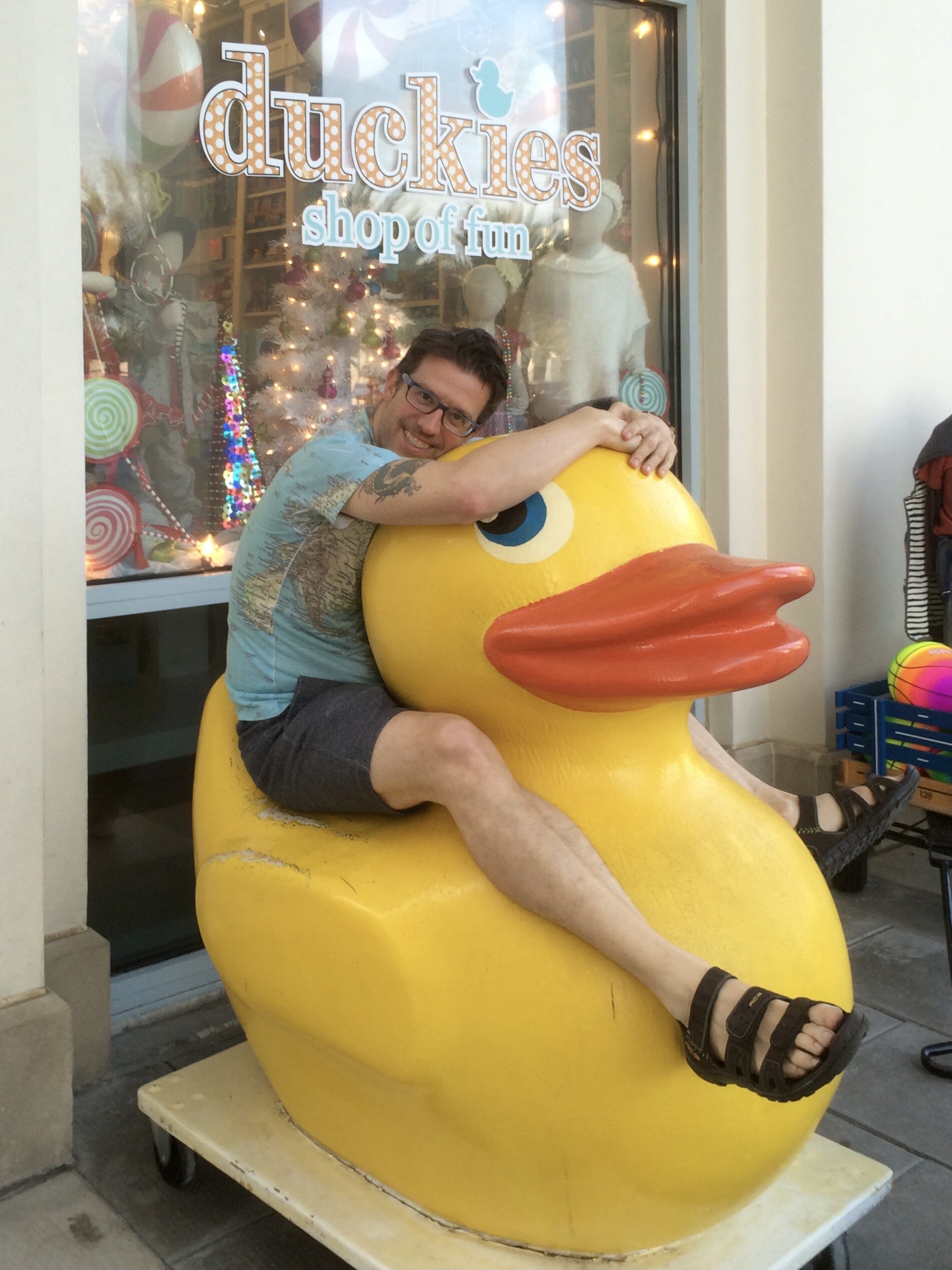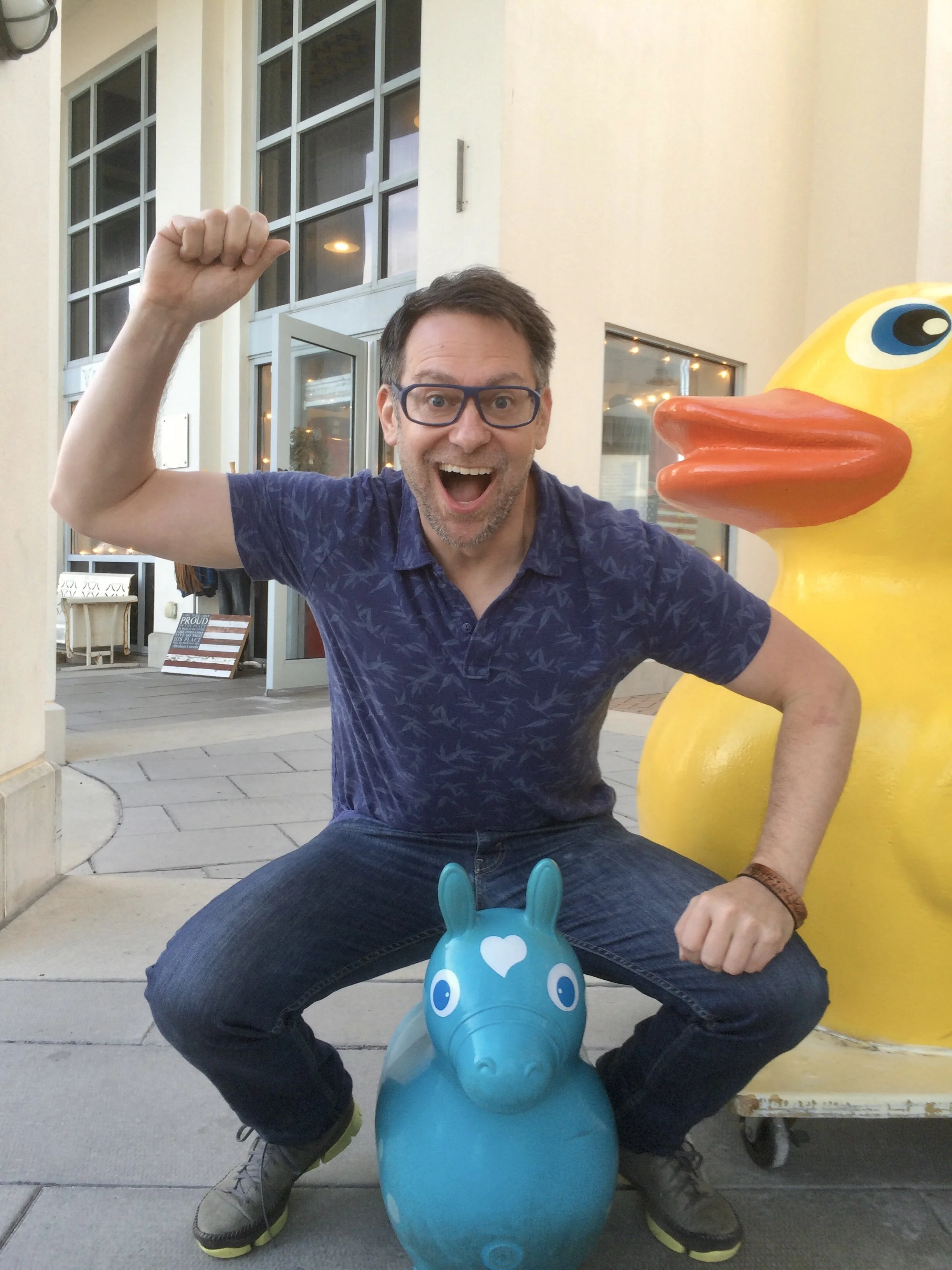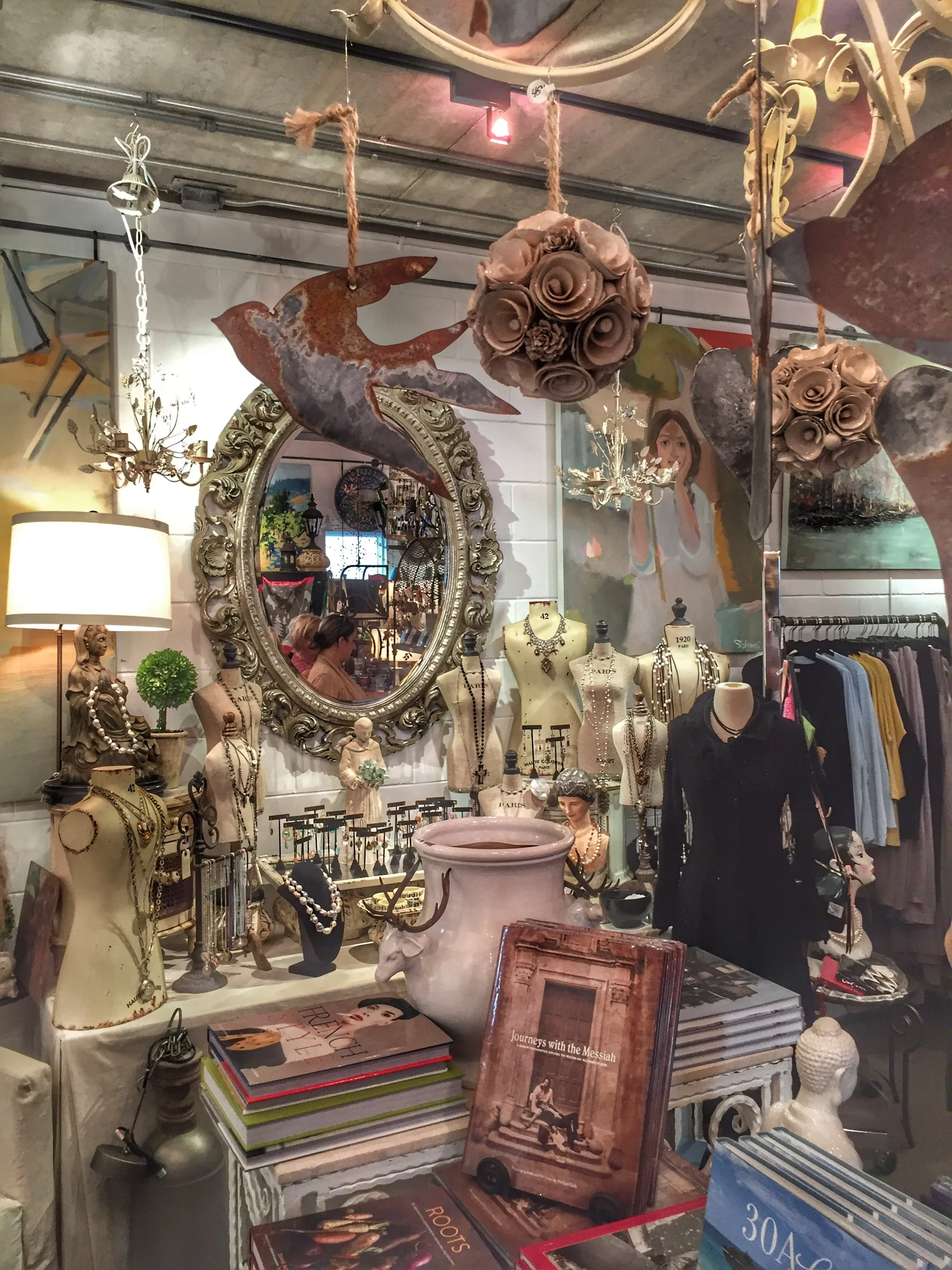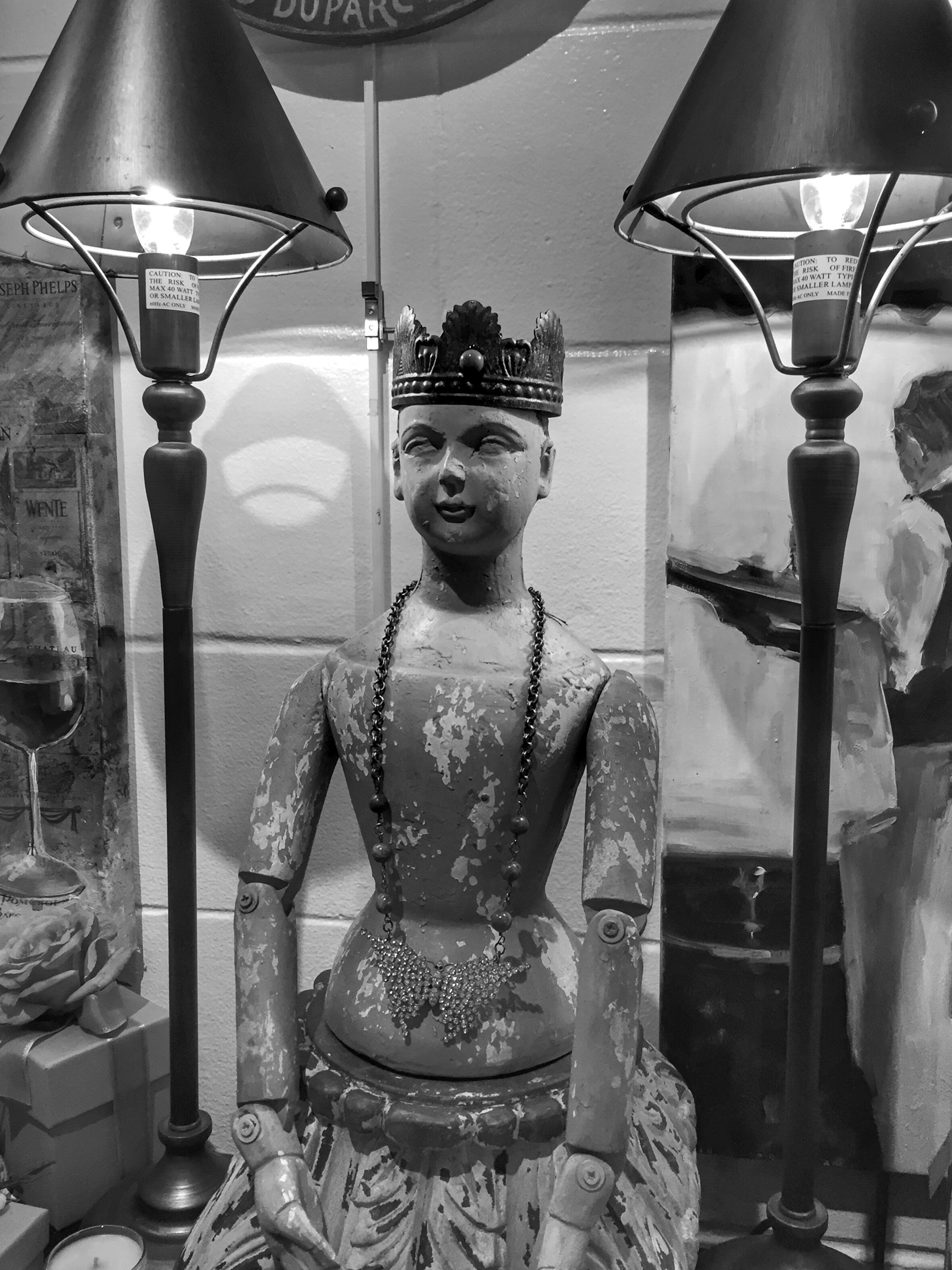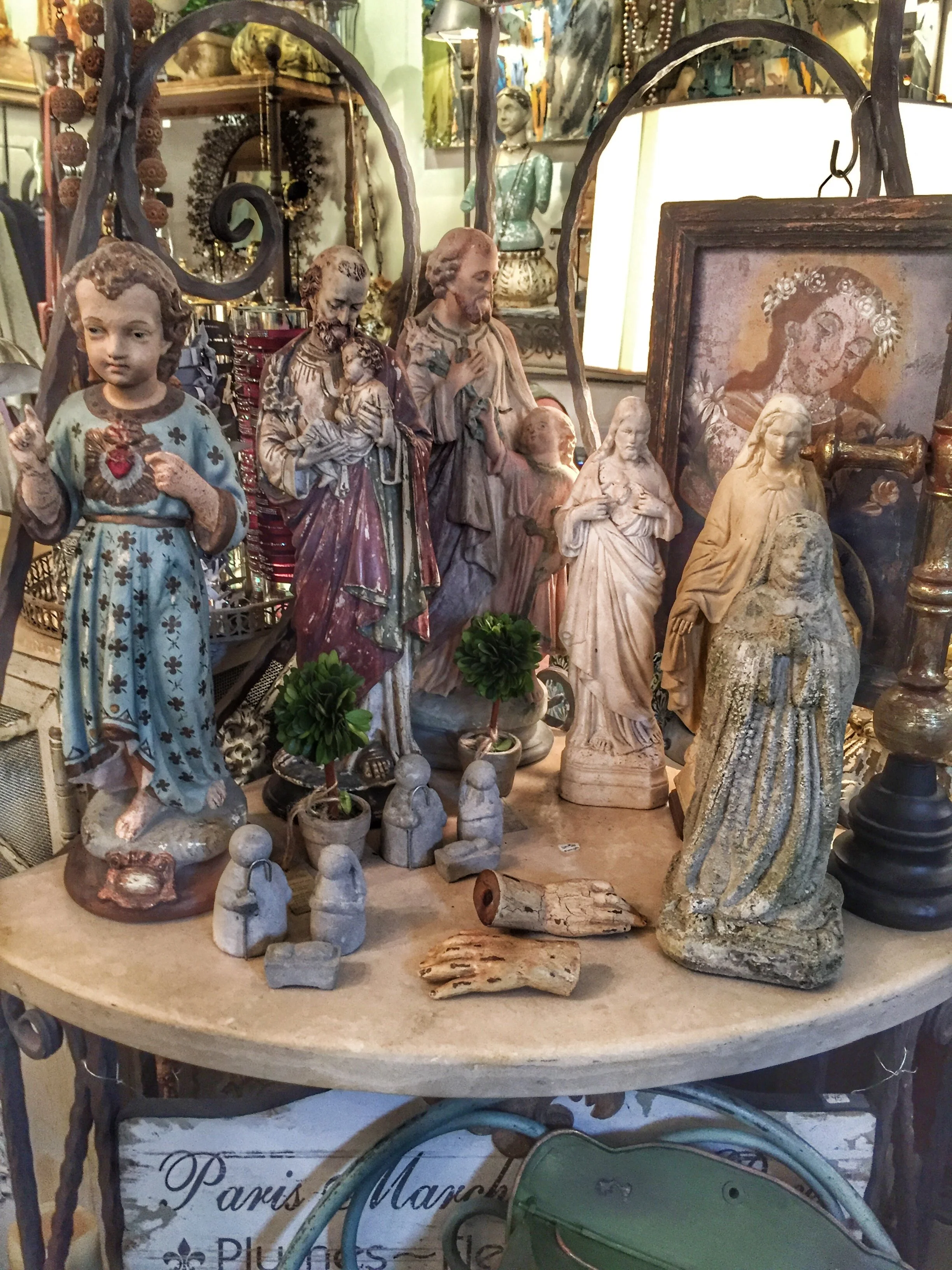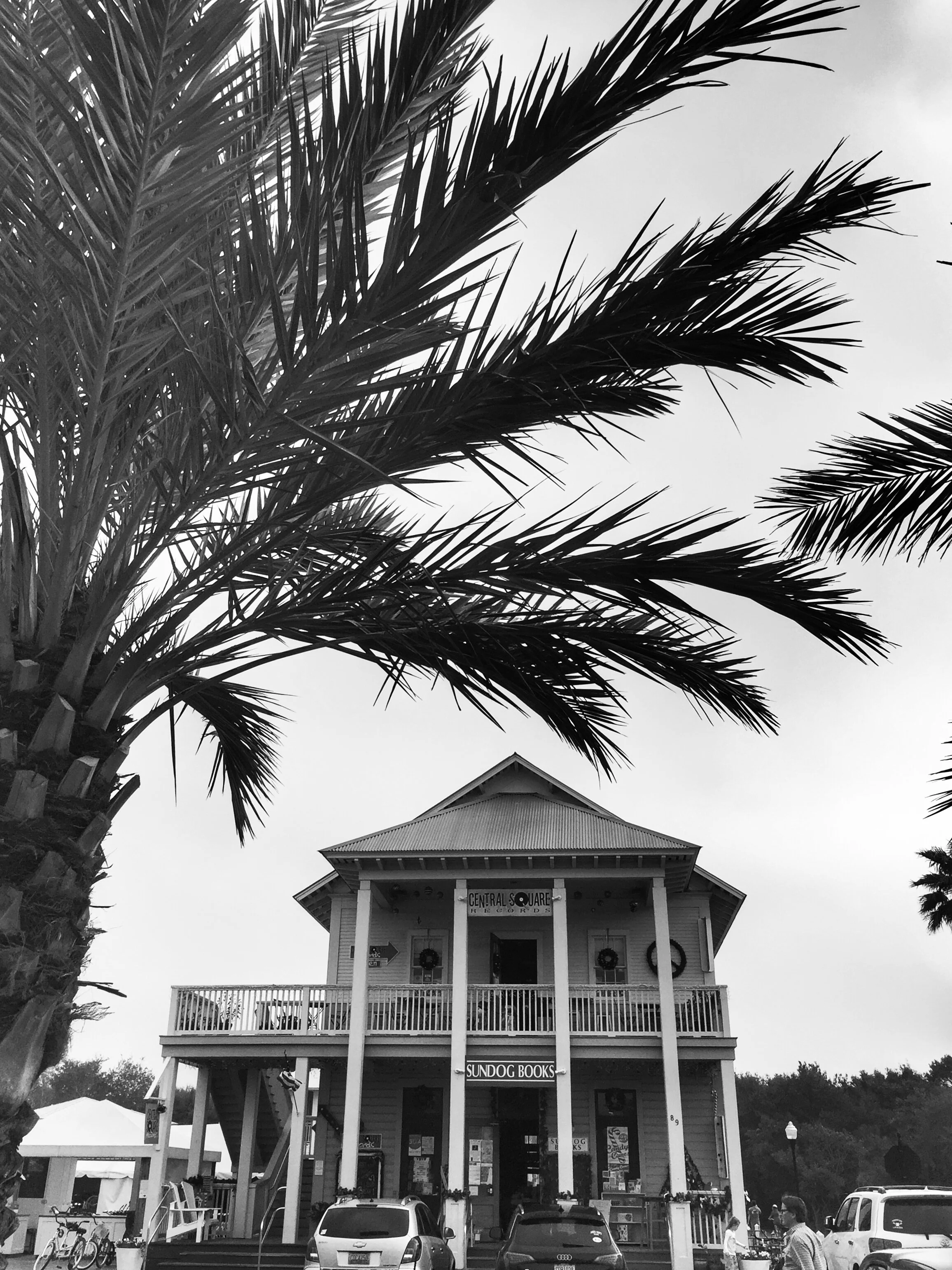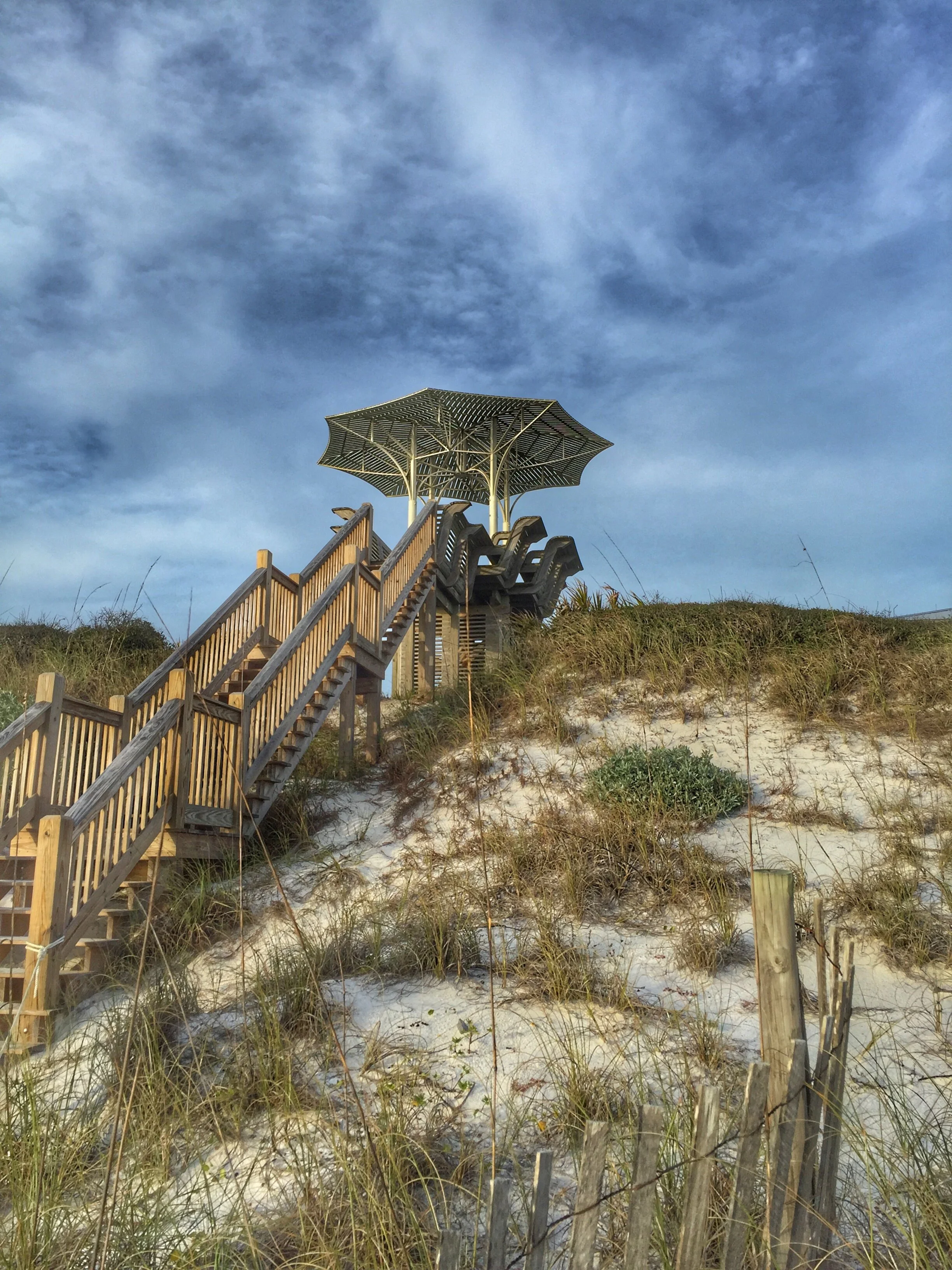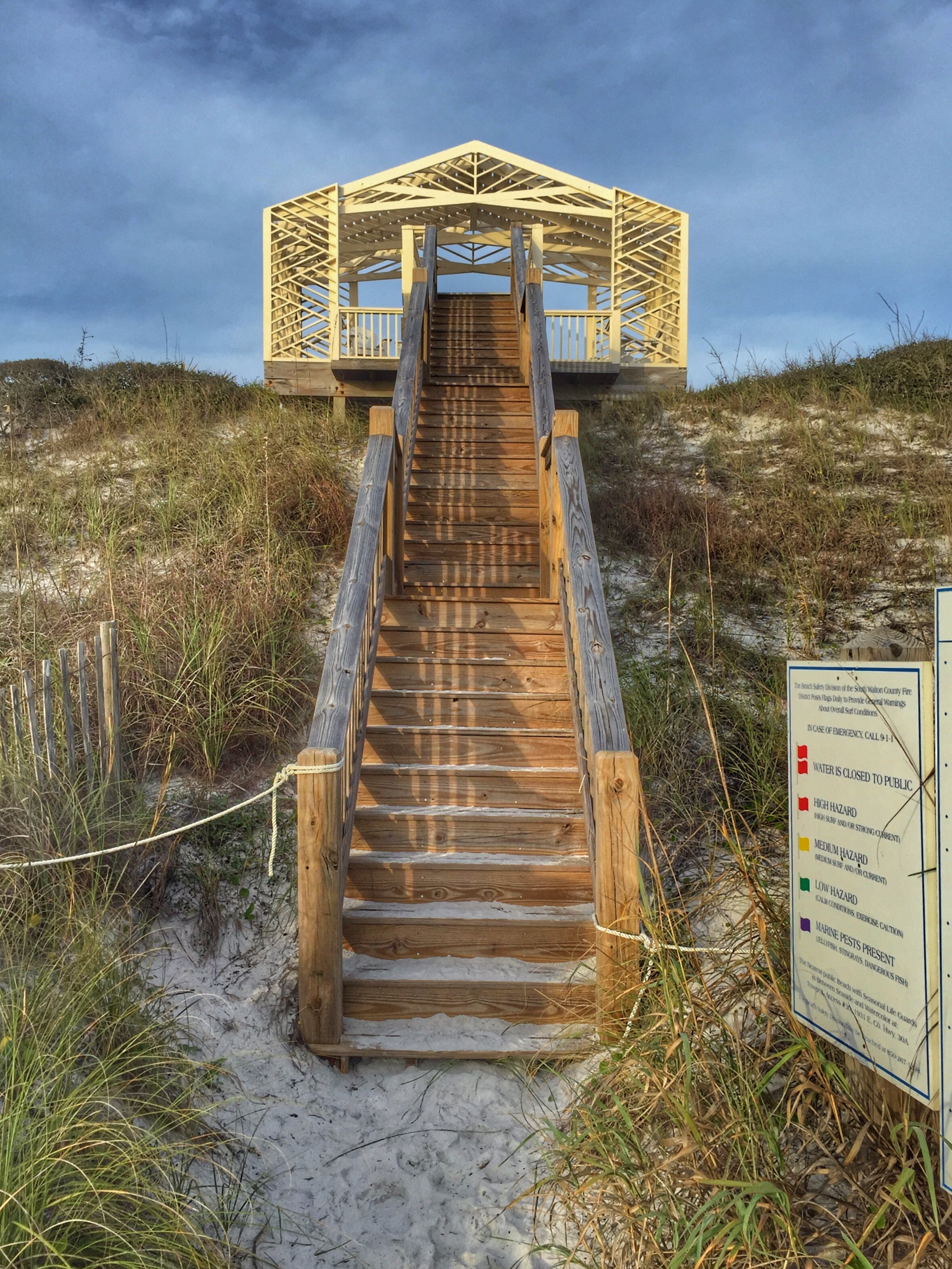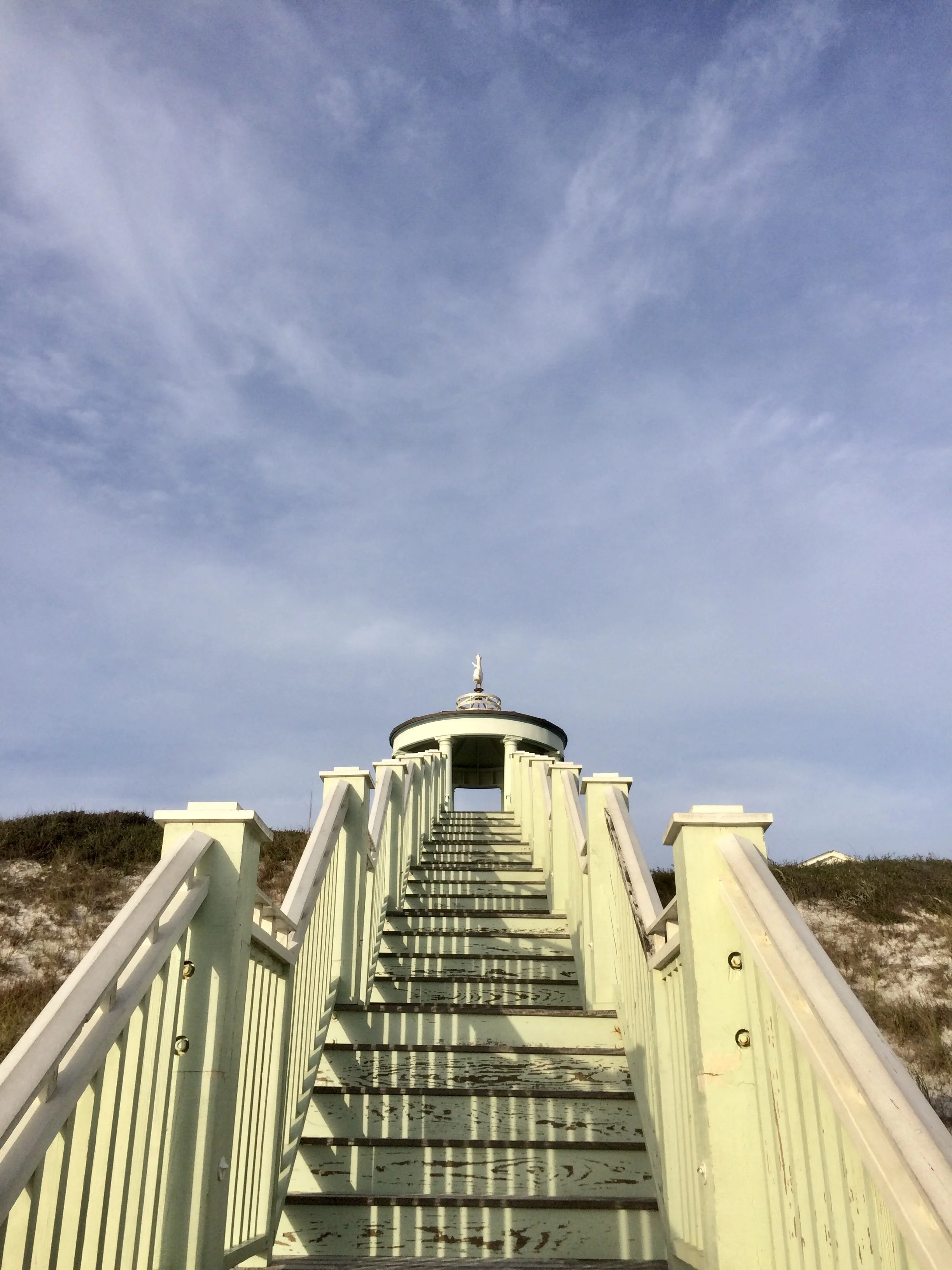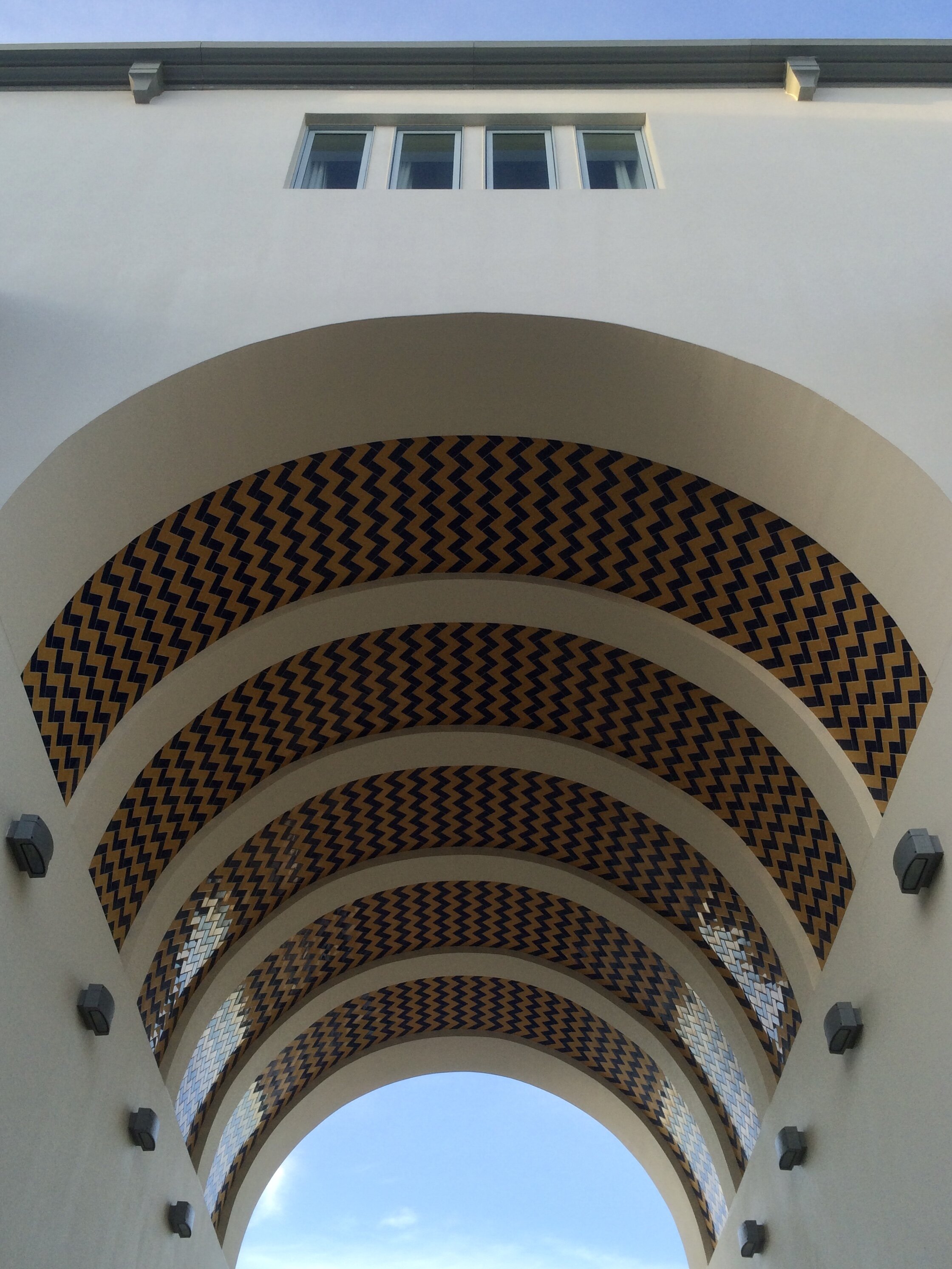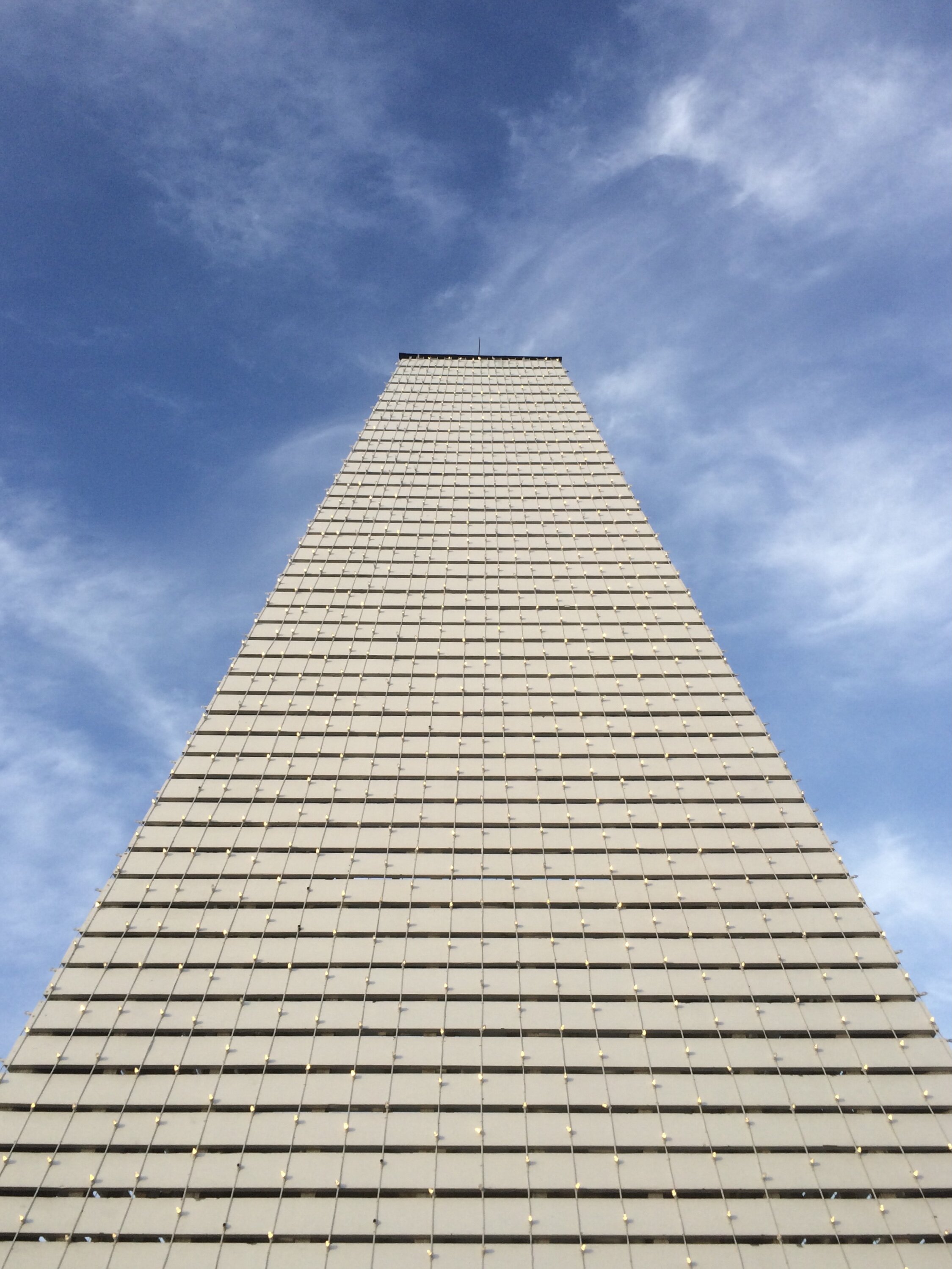The quaint-as-heck New Urbanism town where “The Truman Show” was filmed will charm visitors, even amidst a red tide.
An aerial view of Seaside, Florida reveals the town’s well-thought-out planning, with buildings surrounding green spaces and everything within walking distance.
We left early in the morning from Hilton Head, South Carolina with Wally’s parents and arrived in Seaside, Florida around eight hours later. It was one of Shirley’s sister Eve’s favorite places to visit and is located so far west on the Florida Panhandle that it’s in the Central time zone.
Strangely, we found ourselves simultaneously clearing our suddenly dry throats as we exited the car. We chalked it up as a coincidence — but soon learned it had a more sinister explanation.
Some say the beach at Seaside on the Gulf of Mexico is one of the best in the state of Florida.
We met up with a rental agent who handed us the keys to 208 West Ruskin Place, officially known as Forsythe House. The Shirl asked if the woman knew what was causing the tickle in our throats and got the casual response that it was a byproduct of red tide — airborne toxins released by algal blooms that can cause respiratory illness. The woman suggested we purchase an antihistamine, which would help reduce symptoms.
That flag is a lesson that there’s a price you pay for perfection: red tide, airborne algal blooms that irritate your throat.
We ventured out to the town square and stopped by Modica Market. It didn’t really help Wally and I all that much while we were outside but seemed to do the trick for Dave and Shirley.
Wally and his parents with Duke in front of the charming post office, the first civic building built in town.
Nothing’s Perfect
“It’s almost too perfect,” Wally said as we perused one of the boutiques near our rental. As if on queue, a shop owner replied, “You do know that The Truman Show was filmed here?”
““It’s almost too perfect,” Wally said.
As if on queue, a shop owner replied, “You do know that ‘The Truman Show’ was filmed here?” ”
Seaside was almost eerily quaint — so we weren’t surprised to learn that it’s where The Truman Show, starring Jim Carey, was filmed.
The film stars Jim Carey as Truman Burbank, an insurance salesman who leads a seemingly ideal life in the idyllic town of Seahaven — only to discover that he’s the unwitting star of one of the longest-airing reality TV series.
We looked at each other, wide-eyed.
“I knew it looked familiar!” I exclaimed.
“Now it makes perfect sense,” Wally said.
Our home away from home, Forsythe House
Forsythe House on Ruskin Place
I’ve often joked that if I wasn’t so bad at math, I would’ve been an architect. One of the reasons I moved to Chicago was because of its rich and varied architectural legacy. So you can imagine my excitement when we entered the modernist row house we would be staying in. Designed by Walter Chatham for a couple from Chicago, Forsythe House was filled with quirky artwork. Maybe it was too much of an open loft concept (the ceiling of the living room soars three stories high) or perhaps it was the narrow open tread staircase and cable railing system, but the house wasn’t to Shirley’s taste, which skews more traditional.
Wally and I, though, were utterly smitten with it and loved our third-floor room that overlooked Ruskin Place, the quiet park-like square inspired by the French Quarter of New Orleans. The balconies and archways of the surrounding townhomes are a nod to the Vieux Carré. Buildings display names such as Home Alone, Albert F’s and Beach Music.
Wally hangs out in Ruskin Place, the charming square outside our rental.
An all-white board-and-batten Carpenter Gothic-inspired chapel designed by Scott Merrill stands at the far end of the green. This type of siding consists of wide boards laid vertically with narrower strips of wood, called battens, covering the gaps. It was striking to look at, but, unfortunately, we were unable to see inside as it’s locked up tight when not in use. It’s most prominent feature is the 68-foot-tall bell tower.
The quaint, nondenominational Chapel at Seaside
Next to the property we were staying at was architect Alexander Gorlin’s residence. Aptly named Stairway to Heaven, its exterior features a two-story-high glass curtain wall and spiral staircase that rises through the interior and corkscrews out through the rooftop to take in sweeping views of Seaside and the Gulf of Mexico.
“There’s a lady who’s sure all that glitters is gold, and she's buying a stairway to heaven.” –Led Zeppelin
A Brief History of Seaside and New Urbanism
Founded in 1981, Seaside is located in South Walton County along Florida's scenic two-lane Highway 30A.
The idea began in 1946 when Davis’ uncle, Joseph Smolian, a businessman from Alabama, bought 80 acres of land near Seagrove Beach on Florida's northwest coast. His intent was to develop and create a summer camp for the employees of Pizitz, the regional department store he co-owned and operated in Birmingham.
In 1978, ownership of the property was transferred to his nephew Robert Davis. Davis envisioned a self-sustained coastal community where second-home residents could experience “the special pleasure of relaxing on a porch rocker after a shower at the end of the day on the beach,” like he had on family vacations on the Gulf.
Sunsets are a highlight of the day in Seaside, with the sun setting right over the water.
When development started on the deserted stretch of the Florida Panhandle, Davis tapped Andrés Duany and Elizabeth Plater-Zyberk, pioneers of the New Urbanism movement — a design philosophy which promotes environmentally friendly habits by creating walkable neighborhoods.
The Seaside Neighborhood School was built, in part, thanks to the location fees from The Truman Show.
The planned community of Seaside embodies this ethos. The diminutive post office was the first civic structure to be built, with a charter school and the chapel to follow.
Houses use materials and forms that evoke the vernacular architecture of old Southern towns. Aside from its lawns and squares, the city’s landscaping incorporates native drought-tolerant species such as the gnarled branch evergreen known as scrub oak.
All of the main shops in Seaside open onto the town green, complete with an amphitheater. You can see the back of the post office and the line of food trucks in the background.
It’s a Small World
While browsing the vinyl collection at Central Square Records, we ran into Nichole, a delightfully crass friend of ours from Chicago. She was staying with her mother in a nearby town and spending the afternoon in Seaside. Nichole remarked that she was relieved to be out of the house as it was a real “boner-killer” being at home. Wally went out that night with her to get into some mischief and was introduced to the Justin Bieber song “Love Yourself,” which Nichole had on repeat.
Wally fell in love with the Duckies mascot.
Duke had fun at Duckies Shop of Fun.
Seaside has an eclectic array of shops. A nearby boutique behind the rental we stayed in named An Apartment in Paris turned out to be a favorite of The Shirl. The eclectic, cluttered shop offered French milled soaps, artwork and home goods. It’s as close as you’ll get to exploring the Paris Flea Market in Florida.
Since everything is within walking distance, Wally and I took the opportunity to explore and wander the network of footpaths. Of course we spent a lot of time perusing the shelves of Sundog Books. And we started our days getting our caffeine fix and baked goodies at Amavida coffeeshop.
Duke and Wally hung out here a lot, with a bookshop on the bottom floor and a used record shop above.
Grab a meal or two at the Airstream trailer food trucks, which line Highway 30A.
Across the main thoroughfare of Route 30A, silver trailers used as food trucks and known as Airstream Row, offer a variety of fare from fresh-pressed organic juices to the perfect grilled cheese sandwich.
Making an Entrance: The Pavilions of Seaside
At Seaside, all of the beaches are public. A series of pavilions mark access points, each one designed by a different architect.
One of my favorites was David Coleman’s Obe Pavilion. The slatted-wood obelisk was adorned with lights during our visit in December and appears in the background in The Truman Show.
Take a ride over to the nearby (and colorfully named) town of WaterColor. We had lunch at the WaterColor Inn and bought handpainted ornaments at a small craft fair.
Though the “red tide tickle” deviated from the script, and we were only in Seaside for a long weekend, we were happy to have supporting roles in this idyllic town. –Duke




